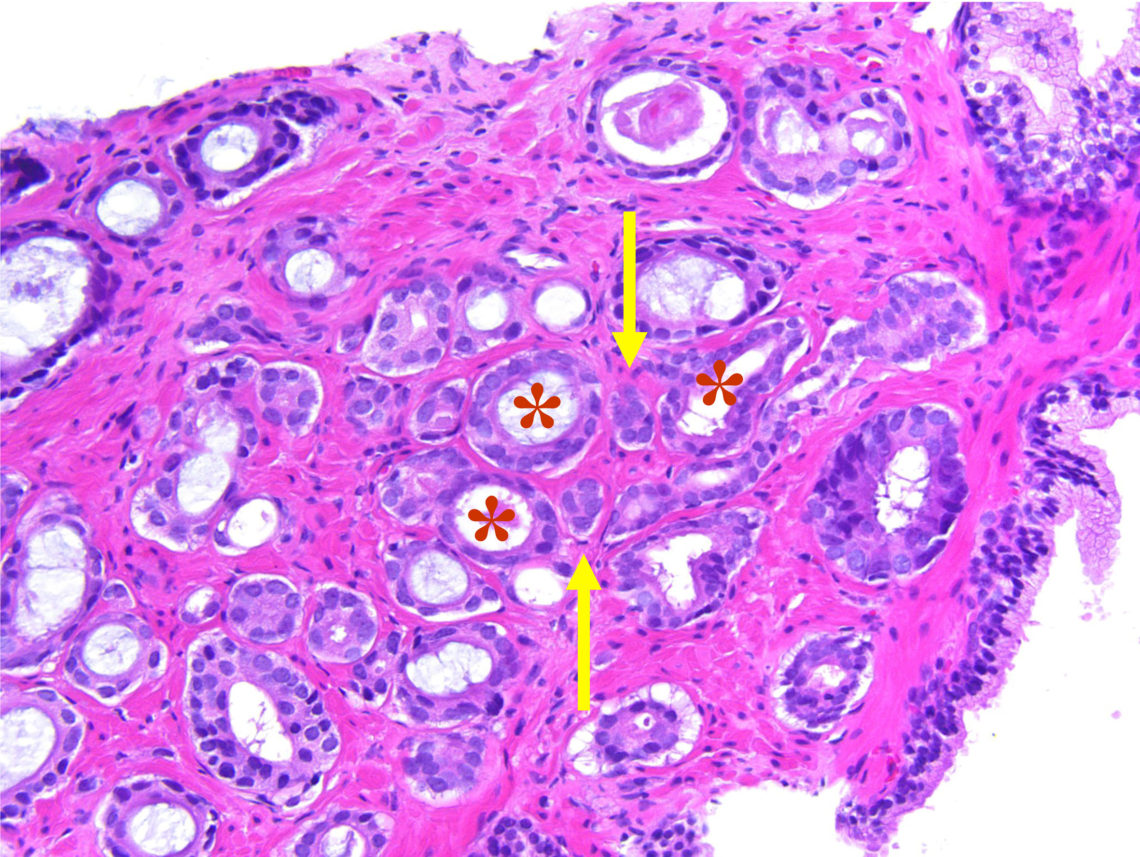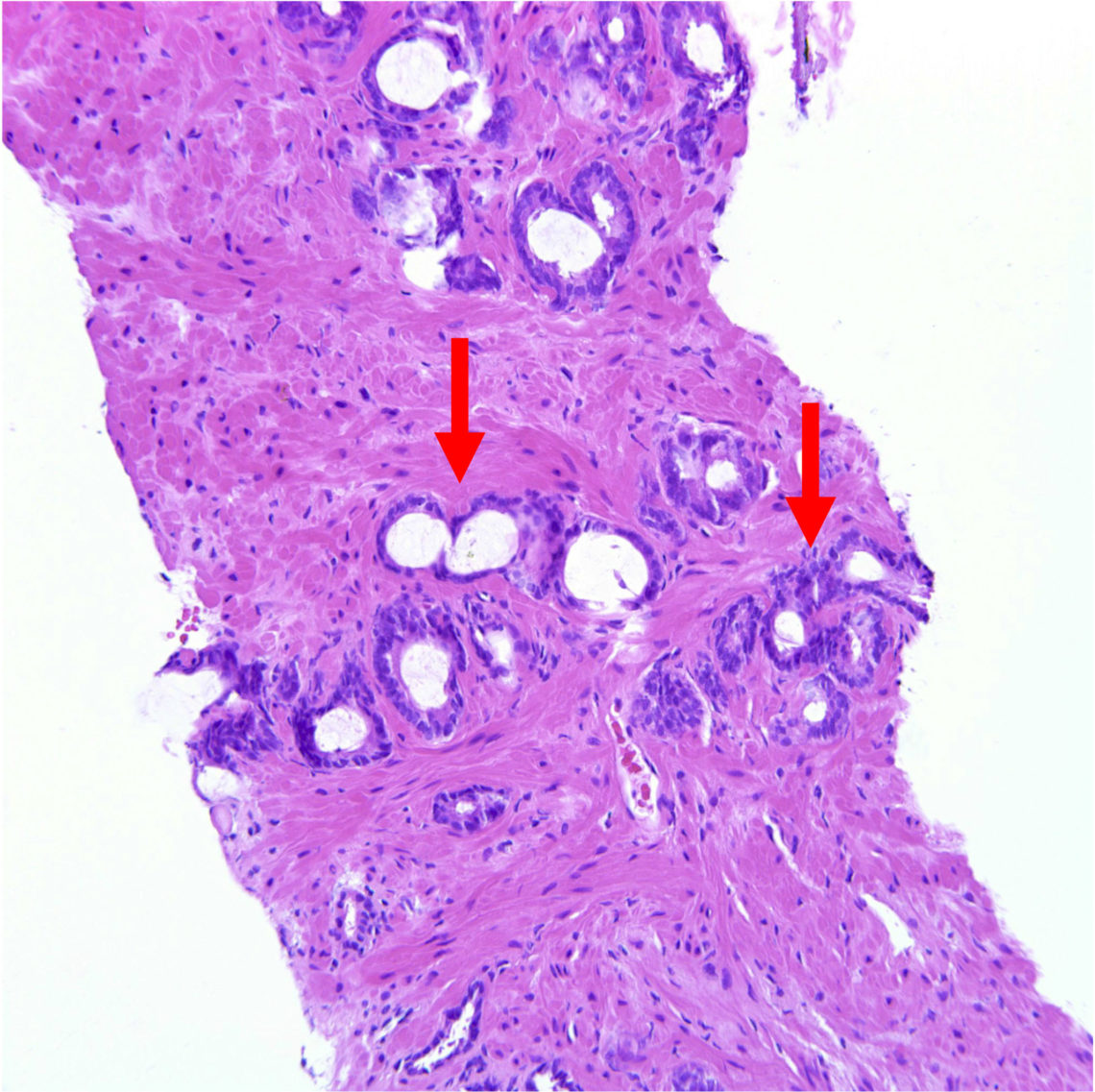Where do we draw the line between GP3 and GP4?
One of the key problems in grading of prostate cancer is how to interpret focal components of structures that look like high-grade cancer.
Occasional seemingly fused or seemingly poorly formed glands should be overlooked as they may represent tangential cutting artifacts, especially when seen between more well-formed glands with similar cytological features. By contrast, a cluster of such structures is less likely to be caused by tangential cutting artifacts and should be considered sufficient for GP4.

Occasional glands may seem to be poorly formed (red arrows) but these are tangential cutting artifacts. This microphotograph shows a typical GP3 cancer.

Occasional glands may seem to be poorly formed (yellow arrows) but these are tangential cutting artifacts. There are just a few such glands and they are located between well-formed glands (red asterisks) with similar cytoplasmic and nuclear features. This microphotograph shows a typical GP3 cancer.

Occasional seemingly fused glands (red arrows). These are tangential cuts and the case qualifies for GP3.